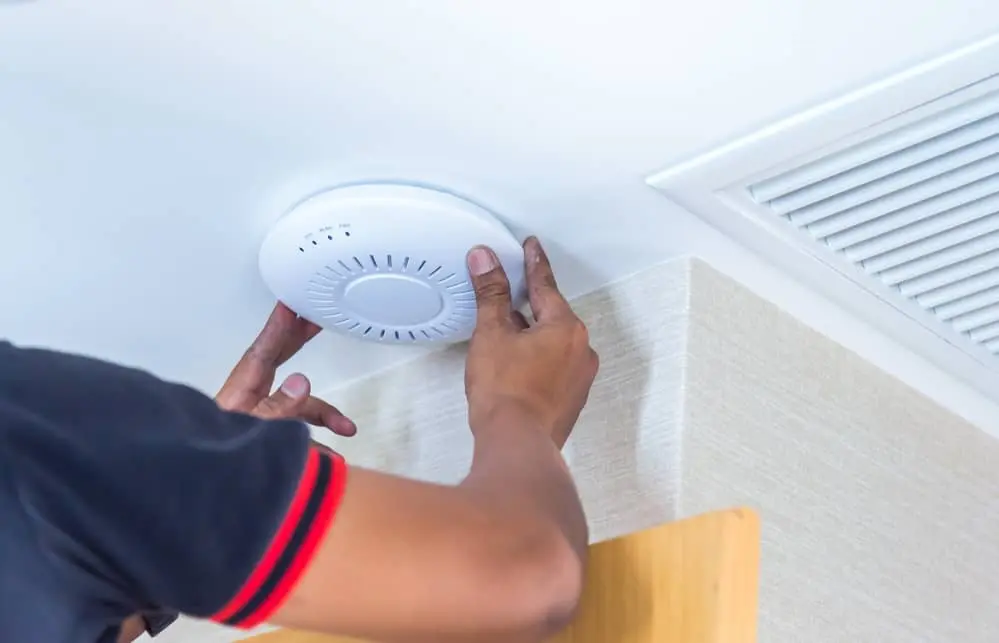Ceiling speakers are a long-term audio solution that provides room-filling sound for decades. That’s why it’s crucial that your speaker choice is aligned carefully with the sound quality you want to get from it in that specific room.
Is it for ambient music, or do you wish to be able to throw the odd party on occasion? Or is it somewhere in between? Where should you place it? What is the best layout for ceiling speakers? The rooms you spend the most time in should have the more powerful models. Other areas primarily serving as background music would suffice with smaller or less costly models.
As a result, your ceiling speakers will likely vary in size, shape, layout, power, and cost for each room.
What Ceiling Speaker Size Do I Need?
The size of the in-ceiling speakers you need will depend on your space’s size and intended use. You can use different sizes to fully optimize your sound experience in every space.
4″ And Smaller In-Ceiling Speakers
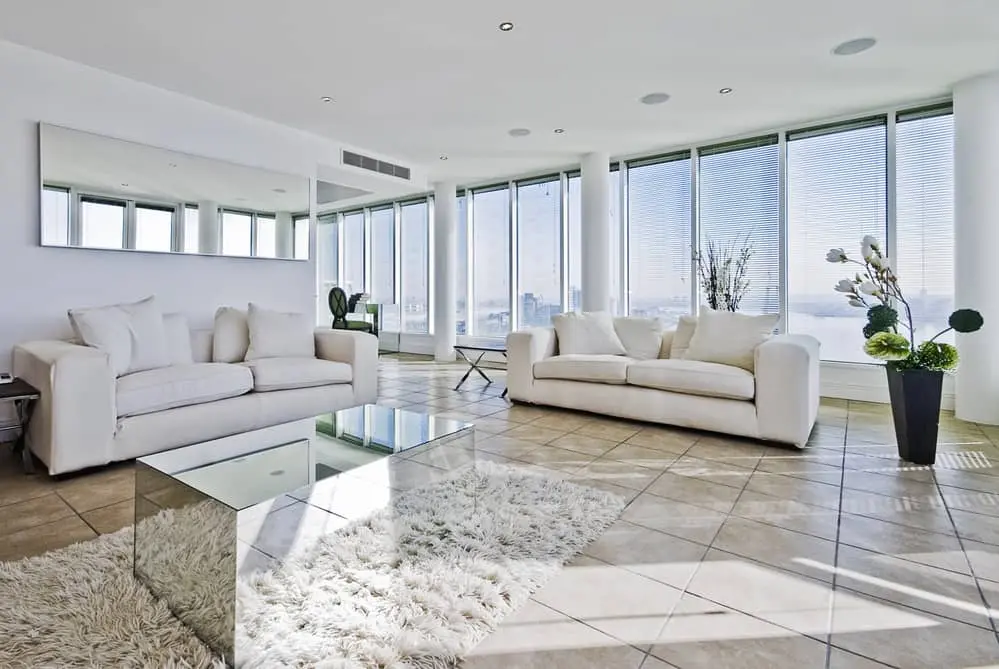
These small speakers are handy once you need audio in a space where discretion is a priority, as they are only sometimes seen. However, the compromise is the sound quality, as the low to mid frequencies are weaker than in larger speakers.
6″ In-Ceiling Speakers
6″ speakers are usually considered the best bang for your buck. They’re great all-rounders and can be used in various applications. Ideal for professional public announcements, background music, and surround sound in areas with medium background noise levels.
8″ In-Ceiling Speakers
If the space that you have high noise levels or want a high-intensity sound experience, 8″ speakers provide better audio range and bass.
Speaker Depth
This can be a critical element to your in-ceiling or in-wall installation. The measurement is the depth (space) required behind the finished ceiling or wall plasterboard. We offer a complete range of different speaker depths to suit all situations.
Ultra slim in-ceiling speakers are typically more expensive than standard depth models of the same quality. This is because more expensive parts are required to give great sound from a slim form factor.
How Many Ceiling Speakers Do I Need In A Room?
Usually, ceiling speakers come in pairs, with one playing the left and right audio channels, resulting in true stereo sound.
As a rough guide, we recommend that for rooms bigger than 3 meters x 3 meters, you utilize one pair of ceiling speakers, and for rooms larger than 5 meters x 5 meters, two pairs offer a more balanced sound.
What Is the Best Layout for Ceiling Speakers?
When home theater was in its infancy, a 5.1 speaker system was state-of-the-art. Even 7.1 is common, and 9-channel and 11-channel surround sound processors are very common. Emerging audio formats such as Dolby Atmos, DTS:X, and Auro-3D also bring immersive height effects into the home, creating more channels extending to 5.1.2, 7.1.4, 11.2.6, and more.
Whatever the number of speakers in a home audio system, the final goal is the precise localization of special effects, seamless panning across all channels, a spacious sound stage, and three-dimensional imaging. This can only happen if each speaker channel is properly situated.
Proper Speaker Placement For 2-channel Stereo Systems
When placing speakers for a 2-channel speaker system, the listener’s head and the two speakers should form the three points in an equilateral triangle. The listening position is identified by the “center to center” distance of the speakers from one another and the distance to the listener’s head. It doesn’t refer to the room dimensions in any way. Symmetrical speaker placement for near-field listening, especially in small to medium-sized rooms, is crucial for optimizing stereo sound quality.
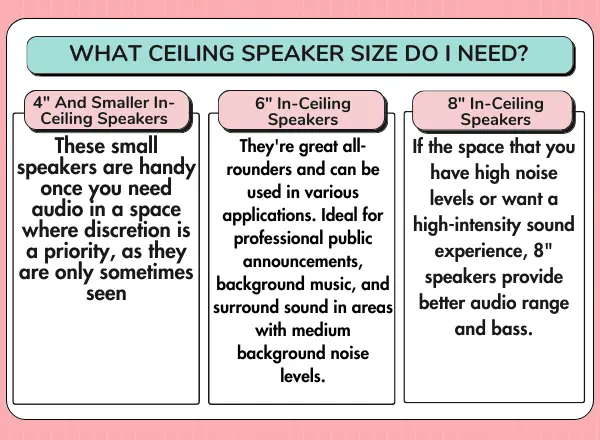
After the main listening position and the speakers are placed close to a perfect equilateral triangle, the speakers are intended to be angled slightly toward the listening position (also known as toeing in). This can be done by ear; usually, a ¼ to ½ inch toe-in is sufficient. When done correctly, you can perceive a center-focused voice when the sweet spot is hit.
Speaker Placement For 5.1 & 7.1 Surround Sound Systems
The primary speakers should be placed 25-30 degrees off-axis relative to the main seating position. The best imaging will be attained when the tweeters are seated near ear height. Most tower speakers accomplish this naturally; a bookshelf monitor requires stands.
Pulling the primary speakers away from the corners (to the extent enabled by room traffic) will lessen boundary reflections and improve imaging.
Center Channel Speaker
The center channel should be set directly on-axis, relative to the primary seating position. Setting the tweeter at/near head level when seated is optimal, as with the main front speakers. However, this is only sometimes possible, depending on the placement of the video display or only sometimes the screen.
If the center channel must be located below head level, an upward tilt of the speaker is recommended to improve mid/high-frequency response and dialogue intelligibility.
Side Surround Speakers
Within a 5-channel system, the side surround speakers should be 90-110 degrees off-axis. The tweeter should be around 2 feet above ear level for the maximum sense of spaciousness.
Rear Surround Speakers
In a 7.1 system, special rear surround speakers are placed behind the main seating position for enhanced rear panning effects.
Set the rear surround speakers at 135-150 degrees off-axis, relative to the main seating position. With the side surround speakers, set the rear surround tweeters around 2 feet above head level once seated.
Speaker Placement For 9.1 & 11.1 Systems
The creation of 9—and 11-channel surround sound processors leads to Wide and Height ‘presence’ channels in the system to enhance sound stage immersion and spaciousness. Since native Blu-ray formats are currently only accessible in 7.1, using wide or High-resolution speakers requires an ascending algorithm in the surround sound processor.
Wide Speaker Channels
The wide speaker channels must be placed between the primary front and side surround speakers. The wide speaker aims to minimize gaps in panning and imaging between the front primary speakers and the side surround speakers and offer an additional sense of envelopment.
The best location for the wide speakers is around 60 degrees off-axis, relative to the main seating position.
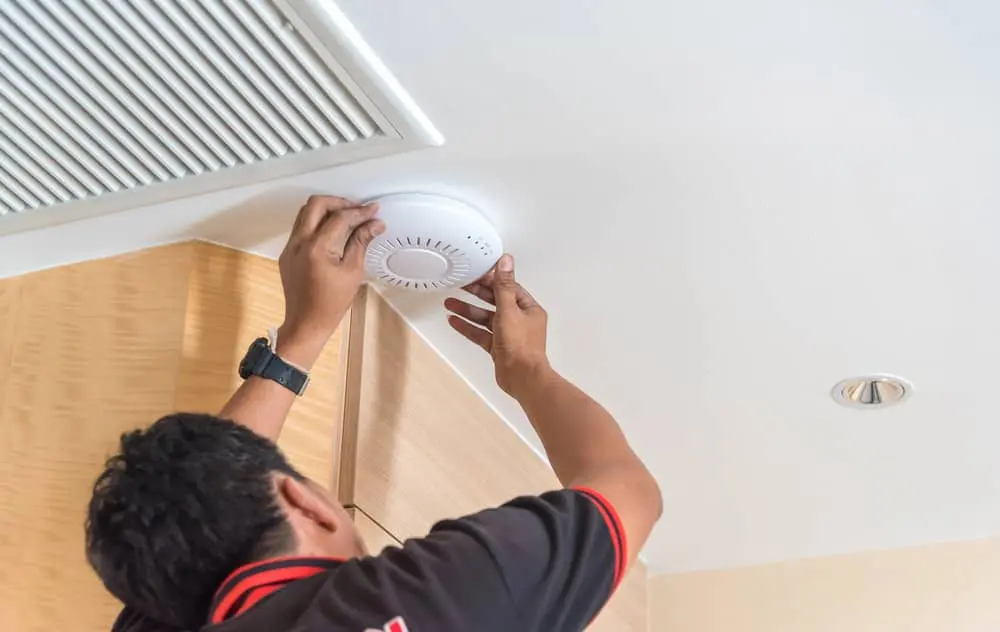
Height Speaker Channels
The height of speaker channels should be set in the front stage’s upper left/right corners. Usually, this will be 40-45 degrees off-axis and around 8 feet tall. A downward tilt of the speaker will enhance mid/high-frequency response and lessen ceiling bounce reflections.
The height speakers improve imaging in the vertical plane. They can even create sound effects directly above the listening position, providing total immersion into the surround sound experience.
How To Power And Control Your Ceiling Speakers
Ceiling speakers come in ‘passive’ and ‘active.’ Active speakers are great for home use, as they’re often ‘plug and play,’ requiring only a simple connection to the mains. They feature a built-in amplifier and are controlled using a device over Bluetooth or WiFi.
Most commercial spaces need more control, making passive speakers a better option. Passive speakers require an external amplifier, which powers the speakers through a speaker cable. Amplifiers offer much flexibility for more integration with automation software, connection over Bluetooth and WiFi, and more. Multiple amplifiers can create a zoned sound for bigger spaces, allowing you to deliver the best audio for every space in your building.
What Else Will You Need?
A few extras are needed to run an in-ceiling speaker system properly. As every system is different, always check with your audio expert for recommendations on which specific items and models to use.
Amplifier
As stated above, an external amplifier is required to power and control passive speakers. Depending on the number of speakers, you can use one amplifier only, or you may need multiple.
Cabling
Your cabling requirements depend on your system’s voltage. We suggest the industry standard for 100v line systems.
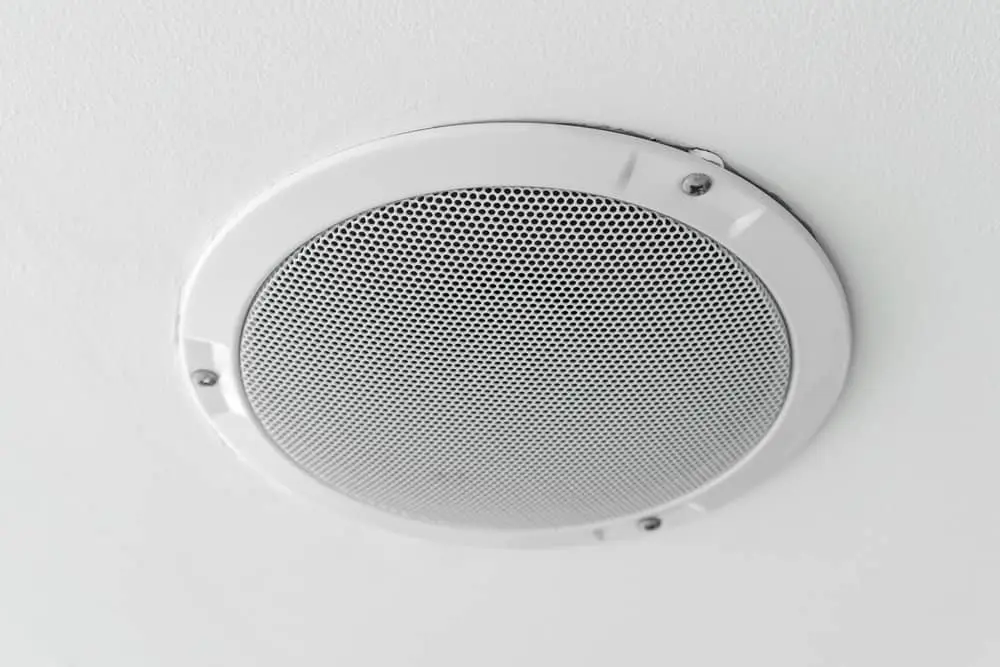
Volume controls
Depending on how you use your space, you might want different volumes in each area. You can attain this manually with wall-mounted volume controls. Or you can take it up to the next level and integrate the sound system with a dedicated tablet for intuitive, centralized control of all your zones.
Who Will Install Your System?
Only qualified professionals should install an in-ceiling speaker system. At Custom Integrators, we provide a dependable end-to-end service, starting from audio mapping up to installation , and even dedicated aftercare. Contact us today to learn how we can help you produce a great sound experience with quality ceiling speakers.

